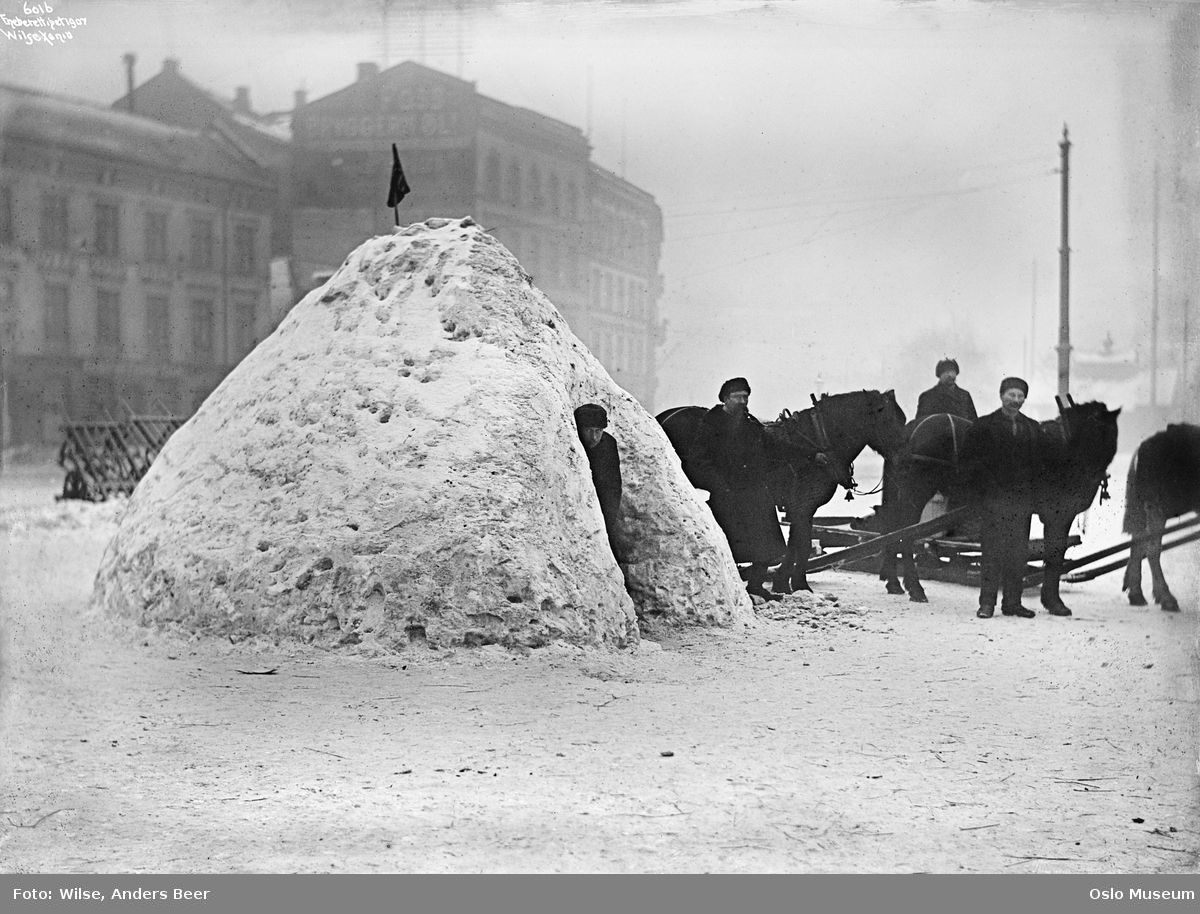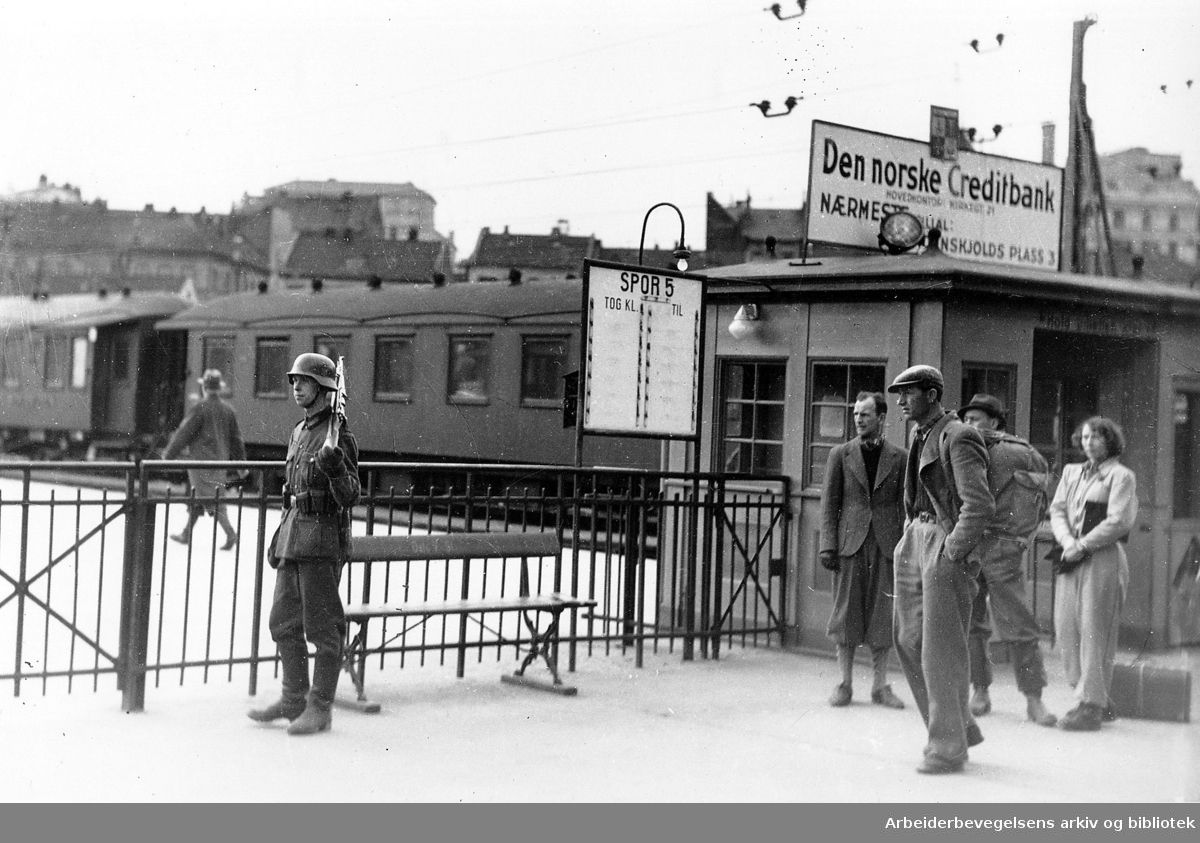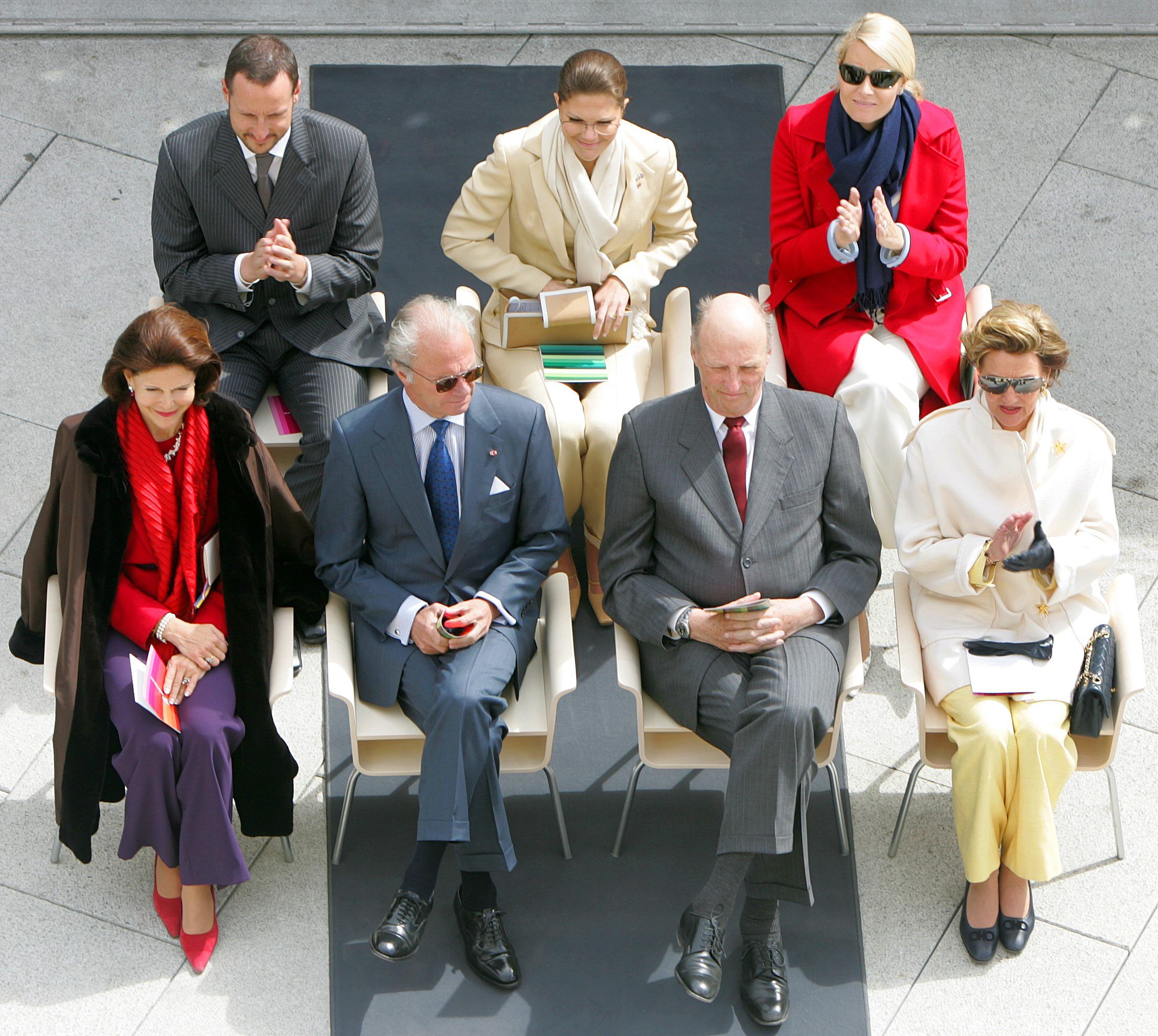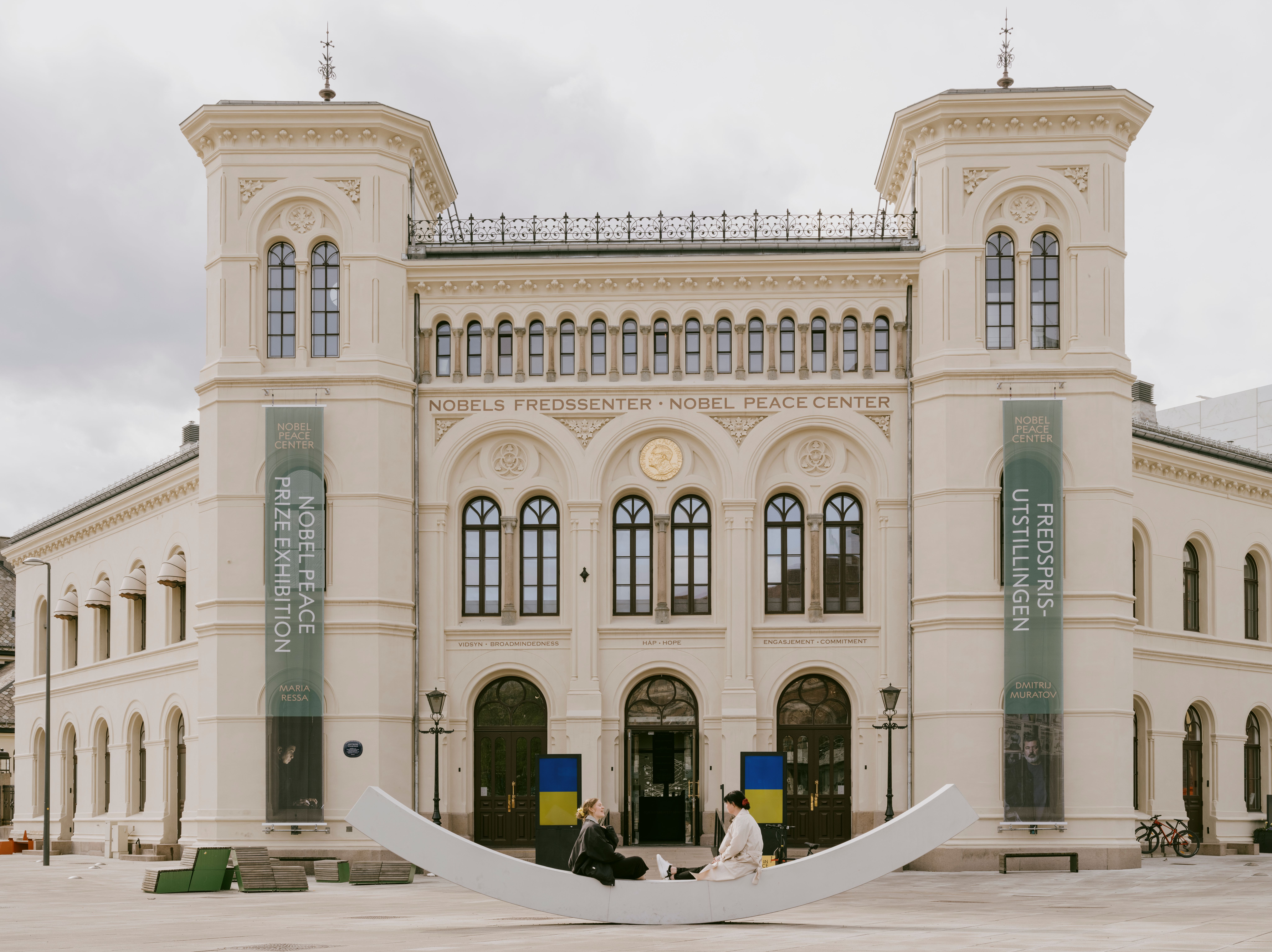A meeting place for people and culture
When you step into the Nobel Peace Center and buy a ticket, you can expect new and exciting experiences – exactly the same as when Vestbanen was a train station. At that time, there was a ticket office and waiting room here, and it was full of people arriving, leaving or receiving visitors. Today's visitors can, if they are very attentive as they walk through the center, spot small features from when the building was constructed – 150 years ago.
Vestbanen opened in 1872, as Oslo’s western terminus of the Drammensbanen rail link. It was designed by Norway's first railway architect, Georg Andreas Bull. The area around the station looked quite different than it does today. OsloCityHall was not yet built, the square outside was called Pipervikbrygga and the surrounding district was one of the city's most congested.
The Nobel Peace Center’s largest exhibition space, Toghallen, used to house train tracks and a locomotive turntable.
Trains arrived at what is today Museumsplassen, between the Nobel Peace Center and the National Museum. In this picture from 1938, you can see train passengers bustling in and out of a train.The Vestbanen building is in the background, still with its archways that passengers went through to get into the main hall. In today’s Peace Center, the archways have been replaced with windows that look out onto Museumsplassen.
Freight trains ran across Museumsplassen and around Akershus Fortress. Train passengers who were to travel onward by train to the east had to get across the city to the eastern terminus, Østbanestasjonen. On the north side of the Vestbanen building, where there are now stairs up to Dronning Mauds gate, there was a taxi rank, and for the first few years horse-drawn carriages waited there for passengers. It was cold standing outside in the middle of winter, so the drivers built a snow hut where they could keep themselves warm. The photo shows a horse-drawn carriage and a snow hut in 1906.

In April 1940, German soldiers took over Vestbanen. German occupation forces were determined to control communication and transportation.The photo shows German soldiers guarding a gate between Rådhusplassen and Museumsplassen. Vestbanen was also the scene of one of the first, significant sabotage operations in occupied Norway. In 1942, when Vidkun Quisling was appointed Prime Minister in a ceremony at Akershus Fortress, the visiting soldiers and National Union leaders were to return home by train from Vestbanen. Two members of the resistance group Osvald managed to get into Vestbanen with suitcases full of explosives. No one was injured in the explosion, but it showed the Germans that Norway had an active resistance movement.

In 1980, the “Oslo tunnel” opened and the train lines west and east of the city were connected underground. As the western line from Drammen went through the tunnel,the Vestbanen station eventually became redundant. In 1989, the last train left the stationand a lengthy discussion began about what the building should be used for. It was first used as a tourist information office. When Oslo began planning a new opera house in the 1990s, Vestbanen was proposed as a venue. Demolition was also an alternative, but the building was listed in 1995. In 2001, the Storting (Norwegian parliament) decided that a museum for the Nobel Peace Prize should be located there.
The young British architect David Adjaye was commissioned to design the new museum. The Nobel Peace Center became Adjaye’s first major international mission and he has since designed several well-known museum buildings, including the National Museum of African American History and Culture in Washington D.C. One of the challenges he faced was to design something new and modern in a listed building. He solved this by using what he calls "spatial manipulation" – new walls were placed on top of old ones, while original elements and details were preserved. For example, the original roofs were preserved in the café and the Nobel Field. In the middle of the shop, you can also see a pillar that has remained unchanged since 1872.
"As an architect, I am interested in how place and atmosphere create the basis for a collective experience. The spaces we designed in the Nobel Peace Center are meant to combine a contemporary feel with the sense of history."

The Nobel Peace Center was opened by His Majesty King Harald V of Norway on 11 June 2005. Norwegian royals HM Queen Sonja, HRH Crown Prince Haakon and HRH Crown Princess Mette-Marit, and Sweden’s HM King Carl Gustav, HM Queen Silvia and HRH Crown Princess Victoria were also present. The opening was part of the official program for the centenary of the dissolution of the union between Sweden and Norway.
Exactly 17 years later, on11June 2022, the new National Museum will open. Once again, there will be a lively bustle of activity in the square behind Vestbanen. What was once a transportation hub has become a place where art and culture, history and the present-day come together.

Share: